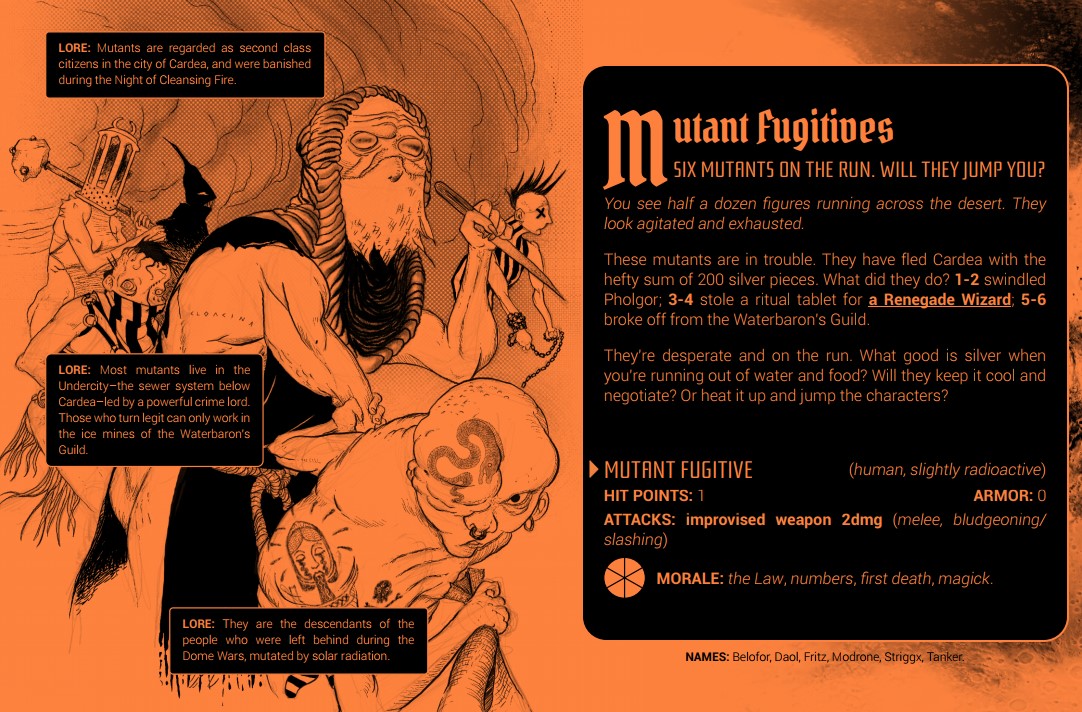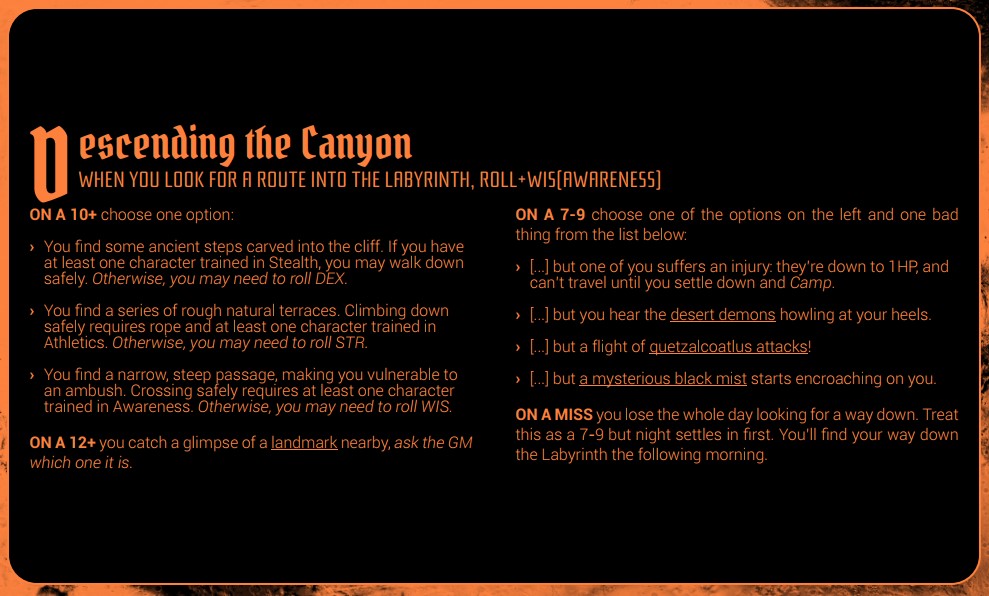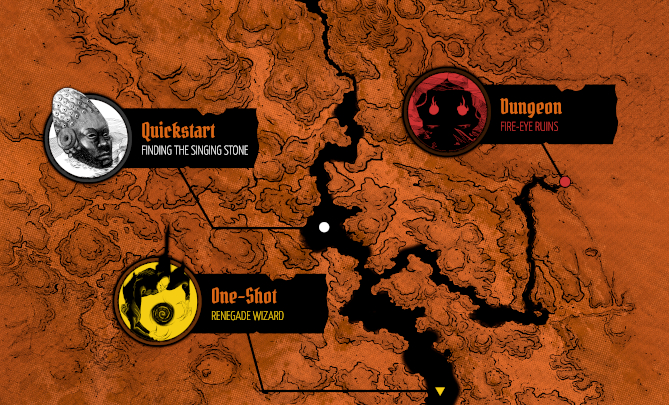Everything's Design 2: Underwritten
If I'm being a 100% honest, I genuinely believe the vast majority of TTRPGs are overwritten. Specially if we talk about traditional TTRPGs, and specially specially if we talk about TTRPG adventures. I feel there are several factors that end up bloating your typical TTRPG adventure:
- Rates per word
- A general conflation between writing and designing
- Focus on "story" over "play"
- The encyclopedic format of "the standard TTRPG book"
- TTRPGs as coffee-table books
- Long-running publication schedules
I wanted to seize this opportunity to go the opposite way: Noctis Labyrinth is very much an "underwritten" collection of adventures. When you read the modules inside, the focus is set on giving tools to the GM to facilitate a game in the most streamlined way I could, using the design elements I had at my disposal to present gameable content for GMs to use at leisure. There is no "plot" to Noctis Labyrinth, there are interconnected hooks the group may pick up to feed their own narrative. There is no "gazetteer" in Noctis Labyrinth, the setting is described in short, flavorful text meant to be elaborated upon.

Landmarks present a location, a situation and some piece of actionable element that turns the environment into a dynamic instance of play. Context, premise, stakes. Elements that require player engagement, instead of long descriptions that must be studied by the GM beforehand, only to be re-described to the group

Encounters present an introduction, a source of conflict and stakes to be resolved by the players. The setting textual load is divided between short text blurbs and illustration, conflict and stakes are described in a paragraph or two, and NPC stats imply in what terms they can likely be engaged with.
NPCs stat blocks follow the classic set of Hit Points, Armor, Attacks we can find in most fantasy games, plus Morale, a mechanic that implies non-lethal ways to deal with them.

Moves tie everything together. I have more to say about how moves make Noctis Labyrinth shine, but for now just let me say that each move is a modular player-facing game piece that gives us the chance to interconnect emergent fictional elements with landmarks and encounters in an active way.
These design elements give me the chance to create nodes of information proposing a game experience that scaffolds a player group to build their narrative by connecting the nodes and building further, while avoiding the trappings of overstepping the act of play by predefining those connectors, or cluttering the page-count with redundant information.
In addition, Noctis Labyrinth was published under ZineQuest 3, meaning it had to accommodate to the event's guidelines of what a zine is, particularly the 64 page-count limit. Personally, I find that limitations empower creativity, and Noctis Labyrinth was a project that not only could fit into a zine, but that would be benefited by such format. By restraining my wordcount, I was able to pack more content, approach adventure design from different angles, and present a diverse array of tools for the GM to adapt to their gaming needs.

It's ironic to waste so many words talking about how Noctis Labyrinth is underwritten, but presenting something in simple terms takes a lot of work, and I wish more designers out there (specially in the trad sphere) placed that effort towards simplicity instead of the comforts of verbosity.
Get Noctis Labyrinth
Noctis Labyrinth
A Weird adventure for World of Dungeons
| Status | Released |
| Category | Physical game |
| Author | MRDR HOBO |
| Genre | Adventure, Role Playing |
| Tags | Dungeon Crawler, Fantasy, low-prep, OSR, PbtA, rpglatam, Sandbox, weird |
More posts
- Weird Fantasy 4: the WeirdDec 18, 2023
- Everything's Design 3: Powered by the ApocalypseDec 16, 2022
- Weird Fantasy 3: Science-Fantasy & Gonzo playNov 27, 2022
- Weird Fantasy 2: Implied settingAug 14, 2022
- Everything's Design 1: IllustrationAug 02, 2022
- Weird Fantasy 1 A Dialog with Anti-CanonJul 23, 2022

Leave a comment
Log in with itch.io to leave a comment.